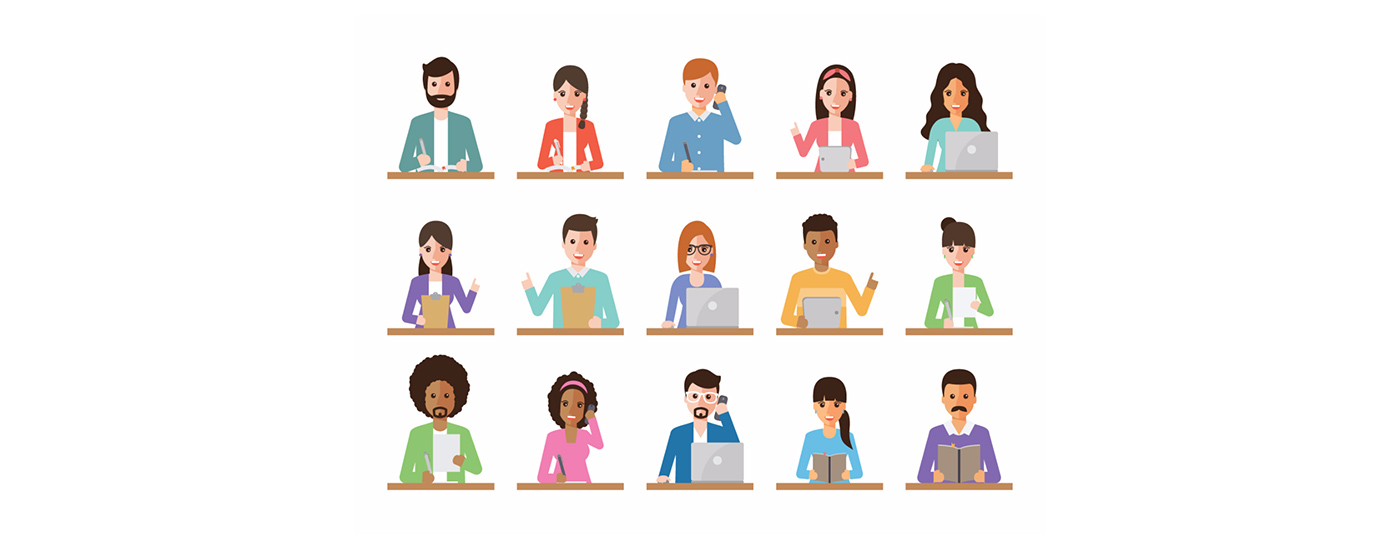Study Finds 30% Of Working Professionals Have A Disability, Most Go Unreported
Updated: October 7, 2020
A new study published by the Center for Talent Innovation (CTI), a private think tank, claims that 30% of working professionals in the United States are expected to have a disability.
This high figure, based on phone-based interviews with over 3,000 “college-educated, employees working full-time in white-collar professions in the U.S,” emerges in stark contrast to a previous workplace statistic from the National Organization on Disability that claimed, on average, only 3.2% of employees self-identify as having a disability.
So, why such the wide gap? The key term here is self-identify. Additionally, disabilities are now understood to be much more widespread than they were in previous years.
A Broader Definition of Disability
The recent introduction of a more contemporary definition of the word “disability” is a major reason this study’s findings are so different from those of its predecessors.
In 2016, the term “disability” under the Americans with Disabilities Act (ADA) was expanded by the federal government to account for advances in medical science in recent years that have reshaped how we think about disability. Disability has now been expanded to mean “medical conditions, mental health disorders, and cognitive disorders” that “interfere with a major life activity (including walking, eating, and working.)”
Interplay of Self-Identification and Invisible Disabilities
The CTI study also reveals that 62% percent of employees with disabilities have “invisible disabilities,” or a disability that one cannot immediately identify upon meeting a person.
Examples of invisible disabilities are learning disabilities like Dyslexia and ADHD, neurological conditions like Auditory Neuropathy Spectrum disorder (brain deafness) and Autism Spectrum Disorder, mental health conditions like clinical depression or anxiety, autoimmune disorders like Lyme disease and HIV, and chronic pain like migraines, arthritis, and carpal tunnel syndrome.
Additionally, most people don’t report their disability to their employer. Only 21% of research participants say they’ve reported their disability to human resources.
Considering that most disabilities go unreported and cannot be “seen,” it raises the question of whether employers should be making their offices more accommodating to the needs of people with disabilities.
Cultivating a Workplace that Works for Everyone
When there are fewer barriers to work in the office environment, productivity goes up. So, when employers proactively ensure their workspaces can accommodate people with disabilities, everyone wins.
Here are some ways to cultivate a workplace that works for everyone:
- Make an effort to embrace universal design practices in every aspect of the workspace
- Ensure your company’s technology, including the application website, is accessible
- Make it easy and welcoming for employees to come forward with a disability and strategize an effective, reasonable accommodation
Captions: A Good Starting Point
Another great way to make your workplace more accommodating to a wide range of disabilities is to caption employee-facing video content (i.e. any video content that is necessary for an employee to do their job).
Implementing video captioning is a great universal design practice because captions have been shown to have universal benefits for people with invisible disabilities like ADD, dyslexia, autism spectrum disorder (ASD), and other cognitive disabilities.
Plus, they are the best way to ensure people who are deaf or hard of hearing (also invisible disabilities) can understand video content. According to the Hearing Loss Association of America (HLAA), 60% of those who have hearing loss are either in the workforce or in educational settings.
So, just by adding video captions, you could be helping more people in at your organization than you know.
Empathy and Awareness for People with Invisible Disabilities
It is important to keep in mind that many people do not consider their disability a disability, possibly out of denial or pride.
At the same time, many people are wary of the stigma that often comes with having a disability and choose not to disclose their disability out of fear people will judge them or see them differently. Coming out with a disability to anyone is not always an easy decision, so it is important to cultivate a workplace that makes this process as comfortable as possible.
As employers, friends, family members, and fellow citizens, we must allow ourselves to understand and accept that there may be some people around us who choose not to disclose their disability for these reasons.
Finally, we must also wonder how many Americans have a disability and may not even know it yet.
—
Read the full CTI report on workplace disabilities and recommendations for workplace solutions here.
Further Reading

Subscribe to the Blog Digest
Sign up to receive our blog digest and other information on this topic. You can unsubscribe anytime.
By subscribing you agree to our privacy policy.





